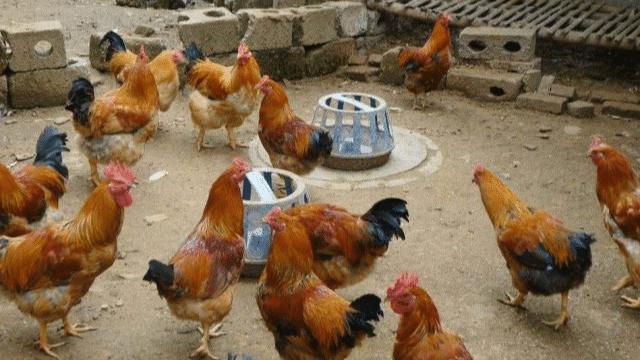The process of raising chickens in rural areas may be due to the environment, conditions, climate change, human interference and other factors to make chickens infected with various diseases, but I believe that the most hated by farmers and friends must be parasitic diseases, such as a more common parasitic disease nowadays is living leukocytosis, this parasite belongs to a protozoa of the genus Leukomatodys in the hematogenesis family, because the lesions caused by the parasitism in the white blood cells and red blood cells of the chicken body, in some places, it is also called chicken white crown disease, and the impact on the chicken body is mainly to lead to the occurrence of anemia. There is bleeding in the oral system, and the excrement will appear green.

First, diagnosis
01, the epidemic characteristics of the disease
I think this parasitic disease occurs most often in the warm season, and a large part of the area is basically close to the water source such as streams, reservoirs or paddy fields, and the incidence of chicken breeds is the highest in chicks aged three to six weeks, and once the chicks are infected with this parasitic disease, the mortality rate will be 50 to 80 percent. However, because most of the chicken farms now invest a lot of anti-coccidiosis drugs, some of which also have a preventive effect on this parasitic disease, so the most common disease will appear in young chickens or adult chickens.
02, the clinical manifestations of the disease
When chicks aged three to six weeks are infected with this disease, they are generally acute, and the chicken body is manifested as the chicks falling to the ground, having obvious difficulty breathing, and finally leading to death, and bleeding in the mouth. The symptoms of sub-acute are manifested as low spirits, low food intake, very fluffy and chaotic body feathers, falling to the ground, secretions in the mouth, anemia and white lesions in the crown, diarrhea, green excrement, and generally death within one to two days when breathing difficulties occur.
Adult chickens are generally chronic after being infected with this disease, the chicken body is manifested as a white crown, diarrhea, excrement is green, it also contains a lot of mucus, after which the weight will begin to decline, development will become almost stagnant, if it is an egg-laying chicken, then there will be a significant decline in production, and even no more eggs at all, this chronic type will last for a month, but the mortality rate is relatively low.
03, pathological changes of the disease
The oral system of the chicken will bleed, the crown of the chicken will have white lesions, the subcutaneous tissue of the whole body will have bleeding phenomena, especially the chest muscles and leg muscles will have obvious blood-colored spots, and various organs in the body will also have bleeding, especially in the lungs, kidneys and liver. Some chickens will have blood accumulation in the entire digestive system after the disease, and small white nodules appear in the parts with many muscles, which can indicate that the chickens have suffered from this parasitic disease.
Second, prevention and control
01, the treatment of the disease: I recommend farmer friends to use SMM according to the concentration of 0.2% to add to the feed, continuous feeding of chickens for four to five days. Or use furazolidone to add to the daily feeding of chickens at a concentration of 0.015 for the same period of four to five days. If you choose to use gram powder, it is necessary to mix it into the feed at a concentration of 0.4%, and the feeding time should be about a week.
02, prevention of the disease
Because the disease occurs close to the water source, so for some insects and small animals carrying pathogens to eliminate, while the chicken coop is equipped with multi-purpose screens, in addition, farmers and friends must control the overall sanitary conditions of the chicken coop in the daily management, often deal with weeds around the chicken coop, pits with water and other livestock excrement, of course, qualified friends can choose to use malathion liquid or pyrimethamine and other agents to spray the chicken coop.